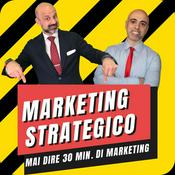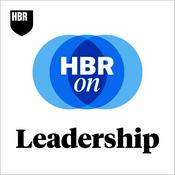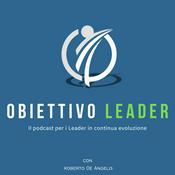1022 episodi

The 2025 State of Cloud in Review
17/12/2025 | 52 min
Aaron and Brian review the Year in Cloud, hand out Cloud awards, and discuss the biggest cloud trends from 2025. Maybe a few predictions will be made as well. SHOW: 985SHOW TRANSCRIPT: The Cloudcast #985 TranscriptSHOW VIDEO: https://youtube.com/@TheCloudcastNET CLOUD NEWS OF THE WEEK: http://bit.ly/cloudcast-cnotwCHECK OUT OUR NEW PODCAST: "CLOUDCAST BASICS"SHOW NOTES:CLOUD & AI NEWS OF THE MONTH - NOV 2025 (show)CLOUD & AI NEWS OF THE MONTH - OCT 2025 (show)CLOUD & AI NEWS OF THE MONTH - SEPT 2025 (show)CLOUD & AI NEWS OF THE MONTH - AUG 2025 (show)CLOUD & AI NEWS OF THE MONTH - JUL 2025 (show)CLOUD & AI NEWS OF THE MONTH - JUN 2025 (show)CLOUD & AI NEWS OF THE MONTH - MAY 2025 (show)CLOUD & AI NEWS OF THE MONTH - APR 2025 (show)CLOUD & AI NEWS OF THE MONTH - MAR 2025 (show)CLOUD & AI NEWS OF THE MONTH - FEB 2025 (show)CLOUD & AI NEWS OF THE MONTH - JAN 2025 (show)2025 CLOUD YEAR IN REVIEWCloud of the year Cloud concept of the year (non-AI)Cloud memory of the yearCloud revenues in 2025Are NeoClouds in the hyperscaler discussion? Was Cloud (circa 2007) the actual downfall of Intel? (Cloud vs Mobile choice)Rank the clouds, end of 2025 (cloud draft 2025)Do outages matter if they are only once a year? Where does AWS go next?FEEDBACK?Email: show at the cloudcast dot netTwitter/X: @cloudcastpodBlueSky: @cloudcastpod.bsky.socialInstagram: @cloudcastpodTikTok: @cloudcastpod

Will there be a market for expert AI agents?
14/12/2025 | 25 min
How difficult will it be to train and build an AI Agent that has expertise in a given domain? Will it happen in the next year, or 3 years or 10 years? And who will benefit in the marketplace from his evolution? SHOW: 984SHOW TRANSCRIPT: The Cloudcast #984 TranscriptSHOW VIDEO: https://youtube.com/@TheCloudcastNET CLOUD NEWS OF THE WEEK: http://bit.ly/cloudcast-cnotwCHECK OUT OUR NEW PODCAST: "CLOUDCAST BASICS"SHOW SPONSORS:[Mailtrap] Try Mailtrap for free[Interconnected] Interconnected is a new series from Equinix diving into the infrastructure that keeps our digital world running. With expert guests and real-world insights, we explore the systems driving AI, automation, quantum, and more. Just search “Interconnected by Equinix”.SHOW NOTESOpenAI looks to train their models to replace junior bankersWHAT WOULD BE THE STAGES OF AN EXPERT AGENT?Train it on a set of standard knowledge (e.g. Masters of Accounting, Auditing, International Tax)Train it on a set of well-defined case studies, to provide industry contextTrain it on a set of adjacent case studies and other domains (business, law, specific industries)How to train corner cases?How to train gray areas like ethics, morality, or cost-benefit analysis? Who is motivated to train these experts? What would the cost of these experts be? Can it be similar to a human, or need to be a fraction, or a premium? Is there a way to build memory (e.g. experience) without disclosing client information? Is there a way to build shareable knowledge between agents for reinforcement training/learning?FEEDBACK?Email: show at the cloudcast dot netTwitter/X: @cloudcastpodBlueSky: @cloudcastpod.bsky.socialInstagram: @cloudcastpodTikTok: @cloudcastpod

How AI is evolving Enterprise Infrastructure
10/12/2025 | 32 min
Dan McConnell (Senior VP Product Management at @HitachiVantara) talks about how Enterprise infrastructure is having to evolve to keep up with the data challenges of AI. SHOW: 983SHOW TRANSCRIPT: The Cloudcast #983 TranscriptSHOW VIDEO: https://youtube.com/@TheCloudcastNET CLOUD NEWS OF THE WEEK: http://bit.ly/cloudcast-cnotwNEW TO CLOUD? CHECK OUT OUR OTHER PODCAST: "CLOUDCAST BASICS" SPONSORS:[Interconnected] Interconnected is a new series from Equinix diving into the infrastructure that keeps our digital world running. With expert guests and real-world insights, we explore the systems driving AI, automation, quantum, and more. Just search “Interconnected by Equinix”.[Mailtrap] Try Mailtrap for freeSHOW NOTES:Hitachi Vantara (website)Topic 1 - Welcome to the show. Tell us about your background.Topic 2 - How is AI changing the way enterprises need to think about infrastructure?Topic 3 - What makes AI workloads so different from traditional workloads? How is AI exposing the limitations of broken cloud environments?Topic 4 - Where are organizations feeling the most pressure? What are the biggest misconceptions enterprises have about preparing for AI?Topic 5 - What problems come from managing separate systems? What is the biggest driving factor toward unified data platforms?Topic 6 - How is Hitachi Vantara helping customers handle the growing infrastructure demands created by AI?FEEDBACK?Email: show at the cloudcast dot netBluesky: @cloudcastpod.bsky.socialTwitter/X: @cloudcastpodInstagram: @cloudcastpodTikTok: @cloudcastpod

The Future of PaaS
07/12/2025 | 20 min
The PaaS of the future probably doesn't look anything like the PaaS of the past. AI should help bring in an era where we can abstract much more than just infrastructure to align technology and business. SHOW: 982SHOW TRANSCRIPT: The Cloudcast #982 TranscriptSHOW VIDEO: https://youtube.com/@TheCloudcastNET CLOUD NEWS OF THE WEEK: http://bit.ly/cloudcast-cnotwCHECK OUT OUR NEW PODCAST: "CLOUDCAST BASICS"SHOW SPONSORS:[Mailtrap] Try Mailtrap for free[Interconnected] Interconnected is a new series from Equinix diving into the infrastructure that keeps our digital world running. With expert guests and real-world insights, we explore the systems driving AI, automation, quantum, and more. Just search “Interconnected by Equinix”.SHOW NOTESVercel v0Building Web Apps with just English and AI (Acquired podcast, Feb 2025)Vercel on The Cloudcast (2024)Vercel on The Cloudcast (2021)8 tools to build your own PaaS (2025)IS PAAS READY TO TAKE THE NEXT STEP? Where could PaaS evolve to now?Can new PaaS services abstract the developer, and just focus on business logic and business ideas? What languages or design patterns would be mandated? (web only, mobile only, web + mobile? )Can we template “best practices” enough to be reliable?Can we template compliances needed to handle financial transactions, customer data, etc.?Can troubleshooting become an automated service?Where was PaaS in the past? (Heroku, Google AppEngine, Cloud Foundry, Kubernetes)Language specificCloud specificAbstracting the infrastructure and securityFEEDBACK?Email: show at the cloudcast dot netTwitter/X: @cloudcastpodBlueSky: @cloudcastpod.bsky.socialInstagram: @cloudcastpodTikTok: @cloudcastpod

AI & Cloud Trends for November 2025
03/12/2025 | 40 min
Brian Gracely (@bgracely) and Brandon Whichard (@bwhichard, @SoftwareDefTalk) discuss the top stories in Cloud and AI from November 2025.SHOW: 981SHOW TRANSCRIPT: The Cloudcast #981 TranscriptSHOW VIDEO: https://youtube.com/@TheCloudcastNET NEW TO CLOUD? CHECK OUT OUR OTHER PODCAST: "CLOUDCAST BASICS"SPONSORS:[Interconnected] Interconnected is a new series from Equinix diving into the infrastructure that keeps our digital world running. With expert guests and real-world insights, we explore the systems driving AI, automation, quantum, and more. Just search “Interconnected by Equinix”.[Mailtrap] Try Mailtrap for freeSHOW NOTES:Link to November 2025 News and ArticlesFEEDBACK?Email: show at the cloudcast dot netBluesky: @cloudcastpod.bsky.socialTwitter/X: @cloudcastpodInstagram: @cloudcastpodTikTok: @cloudcastpod
Altri podcast di Economia
Podcast di tendenza in Economia
Su The Cloudcast
Ascolta The Cloudcast, Buffett: il capitale paziente e molti altri podcast da tutto il mondo con l’applicazione di radio.it

Scarica l'app gratuita radio.it
- Salva le radio e i podcast favoriti
- Streaming via Wi-Fi o Bluetooth
- Supporta Carplay & Android Auto
- Molte altre funzioni dell'app
Scarica l'app gratuita radio.it
- Salva le radio e i podcast favoriti
- Streaming via Wi-Fi o Bluetooth
- Supporta Carplay & Android Auto
- Molte altre funzioni dell'app


The Cloudcast
scarica l'app,
ascolta.






































